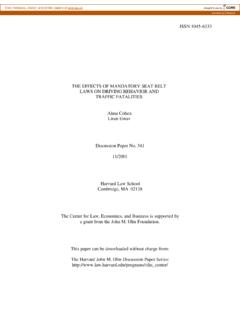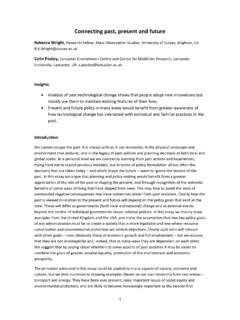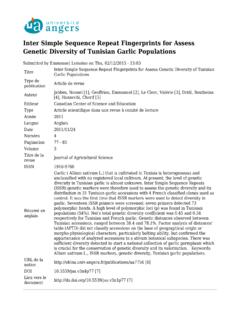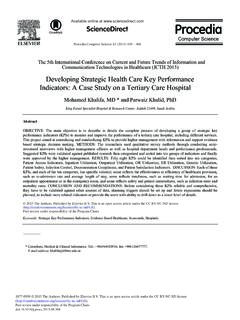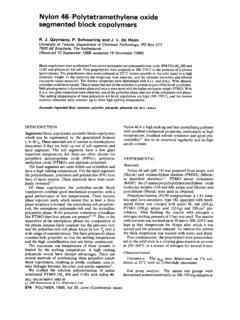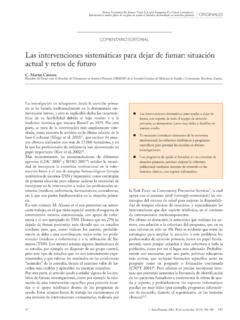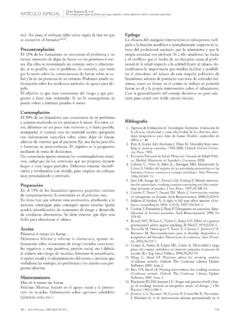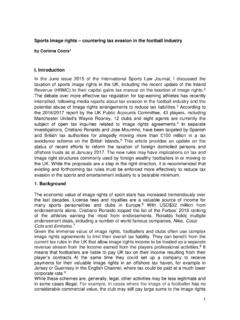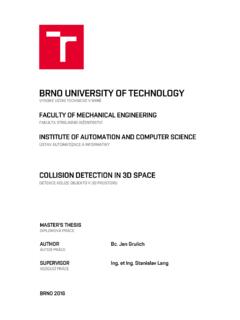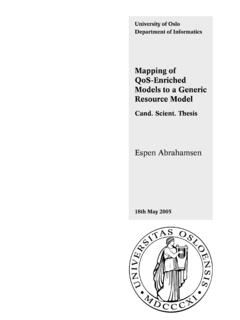Transcription of Psychoanalytic theory - CORE
1 Institute of Geography Online Paper Series: GEO-035. Psychoanalytic theory Entry for the Dictionary of Human Geography, 5th Edition Liz Bondi Institute of Geography The University of Edinburgh Drummond Street Edinburgh EH8 9XP. Scotland, UK. 1. Copyright This online paper may be cited in line with the usual academic conventions. You may also download it for your own personal use. This paper must not be published elsewhere ( mailing lists, bulletin boards etc.) without the author's explicit permission Please note that : it is a draft;. this paper should not be used for commercial purposes or gain.
2 You should observe the conventions of academic citation in a version of the following or similar form: Liz Bondi (2007) Psychoanalytic theory , online papers archived by the Institute of Geography, School of Geosciences, University of Edinburgh. 2. Psychoanalytic theory and practice originated in the late nineteenth century in the work of Sigmund Freud (1956-1939). It offers a distinctive way of thinking about the human mind and of responding to psychological distress. Psychoanalysis has travelled widely from its central European origins, and has evolved into a complex, multi-facetted and internally fractured body of knowledge situated at the interface between the human and natural sciences, and between clinical practice and academic theory .
3 Notwithstanding critiques of its Eurocentric origins, psychoanalysis has been taken up in many different cultural contexts, perhaps most notably in Latin America but also in India, Japan and elsewhere. Its geography and spatiality have become topics for geographical study albeit primarily within the Anglophone literature (Cameron, 2006; Kingsbury, 2003). Along with the more general rise of psychological thinking, Psychoanalytic ideas have had a pervasive influence on such arenas of life as child-rearing, education and popular culture. Within the academy, Psychoanalytic theory has been taken up most extensively in the humanities and more sporadically in the social sciences including human geography, where a distinct subdiscipline of Psychoanalytic geography has shown tentative signs of formation since around turn of the twenty-first century.
4 The unconscious is perhaps the most fundamental and defining idea of psychoanalysis, albeit one that has a much longer history. For Freud only a small proportion of the human mind is knowable through rational thought. The greater part is outside conscious awareness and full of hidden dangers. It makes its presence felt in a variety of ways including dreams, slips of the tongue, the clinical method of free association , and other actions the motivations for which are not discernible by, and are often contrary to, conscious intent. The Psychoanalytic unconscious acts as the repository for experiences, thoughts and feelings that are unacceptable to, and are repressed by, the conscious mind.
5 The unconscious therefore exemplifies a means by which rational HUMAN AGENCY is de-centred in the sense of not being the driving force of human action, an idea that has been highly influential in human geography. The radical OTHERNESS, profound strangeness and disruptiveness of Freud's concept of the unconscious is emphasised by Felicity Callard (2003) in her review of geographers' engagements with Psychoanalytic theory . 3. Freud developed his ideas over a period of nearly 50 years. Not surprisingly there are shifts, tensions and ambiguities within his work. Moreover, he founded an approach taken up by many others, who have variously extended, challenged, supplemented and reworked his ideas.
6 One of the most influential lines of differentiation within the Psychoanalytic tradition lies between those theorists who attach primary importance to the psychic life generated by the instinctual drives of the human organism, including especially drives towards pleasure and towards death or annihilation, and those theorists who attach primary importance to the psychic life generated by a different kind of drive or condition of existence, namely the drive to relate to others. Among the former, the French psychoanalyst Jacques Lacan (1901- 1981) has been especially influential, while the latter has given rise of object relations theory and other relational approaches to psychoanalysis, developed through such theorists as Melanie Klein (1882-1960) and Donald Winnicott (1896-1971).
7 Human geographers have engaged with different strands of psychoanalysis for a variety of purposes. One of the earliest examples in the Anglophone literature was methodological in focus and drew as much on Psychoanalytic practice as theory : Jacquelin Burgess and colleagues (Burgess, Limb and Harrison, 1988) applied ideas from group analysis (a form of psychoanalysis that focuses on the relationship between individuals and their social context) to facilitate the exploration of environmental values in FOCUS GROUPS. Continuing this methodological theme, others have appealed to key ideas informing Psychoanalytic practices to deepen and enrich understandings of the dynamics in play within research encounters (Bondi, 2005).
8 Yet others have drawn on approaches derived from Carl Jung's analytic psychology to facilitate research participants to connect with unconscious childhood experience (Bingley, 2003). Several human geographers have deployed Psychoanalytic theories to develop accounts of human SUBJECTIVITY and its spatial forms. In a highly influential contribution, David Sibley (1995) examines geographies of exclusion combining Melanie Klein's object relations account of the unconscious expulsion of feared and dreaded aspects of our selves, with the post-Lacanian psychoanalyst Julia Kristeva's discussion of the fascination and horror, preoccupation and repulsion associated with 4.
9 That which is expelled. Using these ideas, Sibley (1995) illuminates the profound emotional power of exclusionary processes for the different groups whose members identify with each other and against others in ways that generate highly potent lines of demarcation. While Sibley's (1995) account draws primarily on object relations psychoanalysis, Robert Wilton (2003) draws on Freud's concept of castration together with Lacan's reworking to explore how the geographical exclusion of disabled people may serve to shore up illusions of ableism . Lacanian readings of Freud are also evident in geographical accounts of topics such as RACISM (Nast, 2000) and embodied experiences of cities (Pile, 1996).
10 A product of nineteenth century European culture, Freud hypothesised that the repressed unconscious contains much material of a sexual nature, which would be highly disruptive if allowed to break through into consciousness. He argued that, in order to grow up in socially acceptable ways, boys and girls were called upon to repress their natural , sexual (or libidinal) desires. Normative heterosexual masculinity and femininity were theorised by Freud as demanding psychical achievements. Although aspects of his theories of GENDER and sexual identity have been highly controversial, his approach has also been welcomed as a resource for challenging assumptions about what is natural , and for elaborating a theory of subjectivity as situated in a zone of creative interplay between the personal and the cultural.
